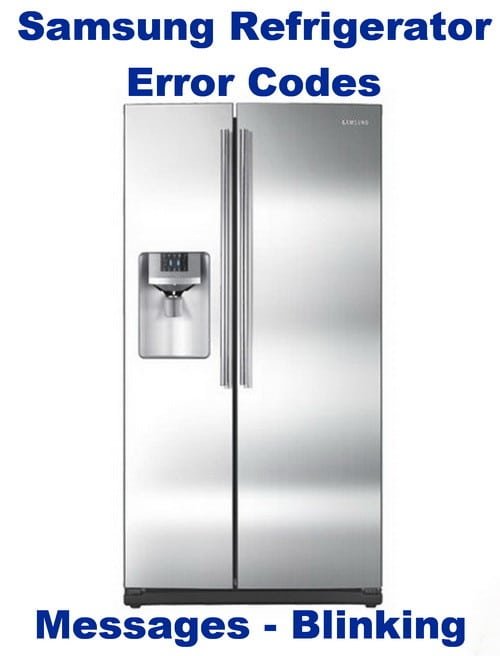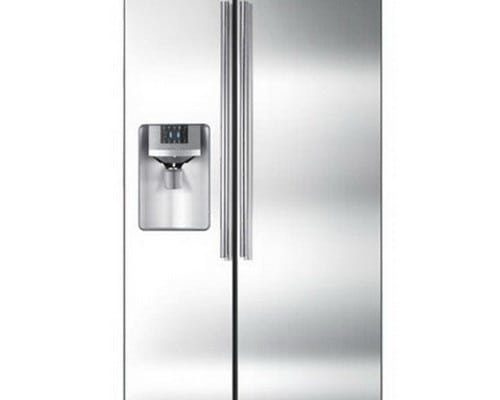
Here’s the deal: when you see the SE error code, it’s like your refrigerator is sending you an SOS signal. It means that there’s an issue with the refrigerator’s control panel or the sensor. Think of it as your fridge’s way of saying, “Hey, I need a little help over here!” With a basic understanding of what might be causing this error and a few troubleshooting steps, you can have everything back to normal in no time.
Understanding the SE Error Code
So, you might be wondering, what exactly does this SE error code mean? In the world of Samsung refrigerators, this code is typically related to communication problems between the control panel and the sensor. Imagine trying to have a conversation with a friend, but the phone line keeps cutting out—frustrating, right? This is essentially what the fridge is experiencing.
These communication hiccups can happen due to several reasons. One common cause is moisture buildup or frost around the sensor, which can disrupt the signals. Another potential reason is a fault in the wiring that connects the control panel to the sensor. It’s like when a light bulb flickers because there’s a loose wire somewhere. But before you worry too much, remember that many of these issues can be resolved with some simple steps.
Other times, electrical surges might have disrupted the system. Like when your computer freezes and needs a reboot, sometimes your refrigerator’s electronics might require a reset to clear the error code. While these seem complex, they’re often fixable with just a bit of patience and know-how.
Step-by-Step Troubleshooting Guide
Alright, let’s dive into some solutions! First things first: try resetting your refrigerator. Unplug the appliance from the power source, wait about a minute, and then plug it back in. This process is like giving your fridge a mini-vacation to relax and reset itself. Many times, this simple act can fix glitches caused by power fluctuations.
If the code still shows up after a reset, the next step is to check the control panel and sensor area for any visible damage or moisture. Carefully dry the area with a soft cloth, ensuring that nothing is obstructing the connections. It’s like cleaning a fogged-up mirror—it might seem trivial, but it can make all the difference!
Should these steps not resolve the issue, it might be time to consider whether the problem lies in the wiring. If you’re comfortable, you could inspect the cables between the control panel and the sensor for any signs of wear or damage. However, if you’re not confident in this area, it’s best to call a professional. They have the expertise to safely manage these trickier problems without causing further issues.
When to Call a Professional
Now, you might ask, “When should I throw in the towel and call a professional?” Well, if you’ve tried the basic troubleshooting steps and the SE code persists, it might be time to seek out expert help. Think of it this way—sometimes you need a mechanic for your car when the DIY fixes aren’t enough, and the same goes for your refrigerator.
A certified technician can diagnose stubborn issues that aren’t apparent to the untrained eye. They have specialized tools to test electrical components and can replace faulty parts more accurately than a DIY attempt. Plus, working with electricity and sensitive appliance parts can be risky if you’re not experienced, so safety should always be a priority.
Also, if your refrigerator is still under warranty, it’s a good idea to contact Samsung support. They might cover the repair costs, saving you money and ensuring that the job is done right. Remember, there’s no shame in calling in reinforcements when you need them, especially when it comes to keeping your home running smoothly.
Preventative Tips and Final Thoughts
Nobody likes dealing with error codes, especially when they disrupt daily life. But here’s a little secret: with a bit of care, you can often avoid them altogether. Start by regularly cleaning your refrigerator’s interior, especially around the sensor area, to prevent moisture buildup. Think of it like maintaining a car—regular check-ups can prevent bigger problems down the road.
It also helps to avoid overstuffing the fridge, which can lead to poor air circulation and frost buildup. Keep an eye on the seals and make sure the doors close securely, as leaks can cause temperature fluctuations that might trigger error codes.
In conclusion, while the SE error code might seem daunting at first, it’s usually manageable with some straightforward troubleshooting. And when the going gets tough, professionals are just a call away. By understanding what your refrigerator is telling you and knowing how to respond, you can keep it running smoothly and extend its lifespan. Here’s to fewer error codes and more peace of mind in your kitchen!
